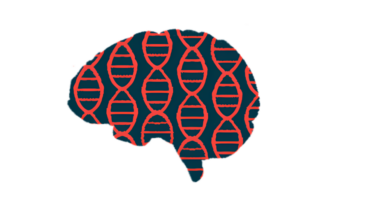Therapeutic Target for Inflammation Driven by Astrocytes Seen
Signaling pathways identified that can regulate activation of astrocyte subsets
Using a new approach, researchers have identified new signaling molecules that regulate the activation of certain subsets of astrocytes thought to drive inflammation in multiple sclerosis (MS).
The new methodology, called FIND-seq, enables the selection of single cells from a sample based on the expression of specific genes and the analysis of their complete gene expression profile.
Using cells from an MS mouse model, researchers found that the NR3C2 and NCOR2 proteins can inhibit the activities of some disease-promoting astrocytes by suppressing XBP1 protein activity. Modulating these molecules may offer a way to reduce brain inflammation and neurodegeneration, researchers noted.
“These findings identify novel targets for therapeutic intervention in neurologic diseases such as MS,” said Francisco Quintana, PhD, a professor of neurology at Harvard Medical School and a scientist at Brigham and Women’s Hospital (BWH) in Boston, in a university press release.
The study, “Identification of astrocyte regulators by nucleic acid cytometry,” was published in Nature.
Astrocytes are a family of nerve support cells that populate the central nervous system (CNS), or the brain and spinal cord. These small, star-shaped cells work to keep nerve cells healthy by regulating blood flow, supporting energy needs, and aiding in nerve cell repair after injury, among other roles.
Astrocytes normally become active in response to a brain injury, a process that involves structural and functional changes that mediate inflammatory responses to help repair the injury. Uncontrolled astrocyte reactivity has been implicated in a number of chronic neuroinflammatory conditions, including MS, however.
Researchers previously identified a subset of astrocytes that promoted neuroinflammation in animal models of MS. These cells were distinguished by the activation of XBP1, a transcription factor that controls cellular activities by regulating gene activity. But they are notoriously difficult to distinguish and isolate in the lab to study.
In fact, available approaches for studying astrocyte subsets are often costly, inefficient, or impractical, especially because these cell types are rare, according to the study’s researchers at BWH who developed a new method for isolating and studying astrocyte subsets that sorts cells based on RNA or DNA markers unique to that cell type. RNA is an intermediate molecule used in converting DNA to a protein product.
Called FIND-seq, the approach uses a multistep process “that can take millions of cells as input and analyzes rare cell populations with [less than 1%] abundance in a cost-effective manner,” the researchers wrote.
Using the newly developed approach, they isolated the subset of XBP1-positive astrocytes to study them and identify potential targets that could dampen their pro-inflammatory activity.
About 18 days after MS-like disease was induced in mice, these cells were found at about 10 times higher levels than before induction. They also showed increased pro-inflammatory signaling molecule activity.
“Collectively, these findings underscore the ability of FIND-seq to analyze in-depth an astrocyte subset of interest relevant for the promotion of CNS pathology ,” the researchers wrote.
Analyses of these isolated astrocytes also identified signaling molecules that could be modulating the cells’ disease-driving properties. One such molecule, NR3C2, has known immune-modulating effects.
Experimentally blocking the gene encoding that protein in astrocytes caused MS symptoms to worsen in the mouse model. Additional experiments supported a potential role for NR3C2 in preventing astrocyte-driven inflammation by suppressing XBP1 activation.
NR3C2 may work collaboratively with another protein, called NCOR2, to suppress inflammation, results showed.
To validate their findings, the researchers examined brain tissue from MS patients. Analyses showed reduced NR3C2 levels and signs of reduced NR3C2-NCOR2 signaling in astrocytes compared with healthy tissue.
“Taken together, these findings suggest that the balance between XBP1 and NR3C2-NCOR2 signaling controls disease-promoting astrocyte activities that contribute to CNS pathology,” the researchers wrote, adding targeting NR3C2 and/or NCOR2 may offer a new strategy to treat MS or other diseases marked by neuroinflammation and neurodegeneration.







